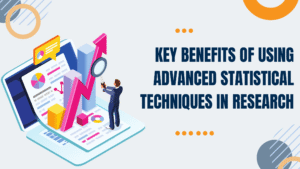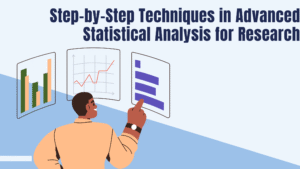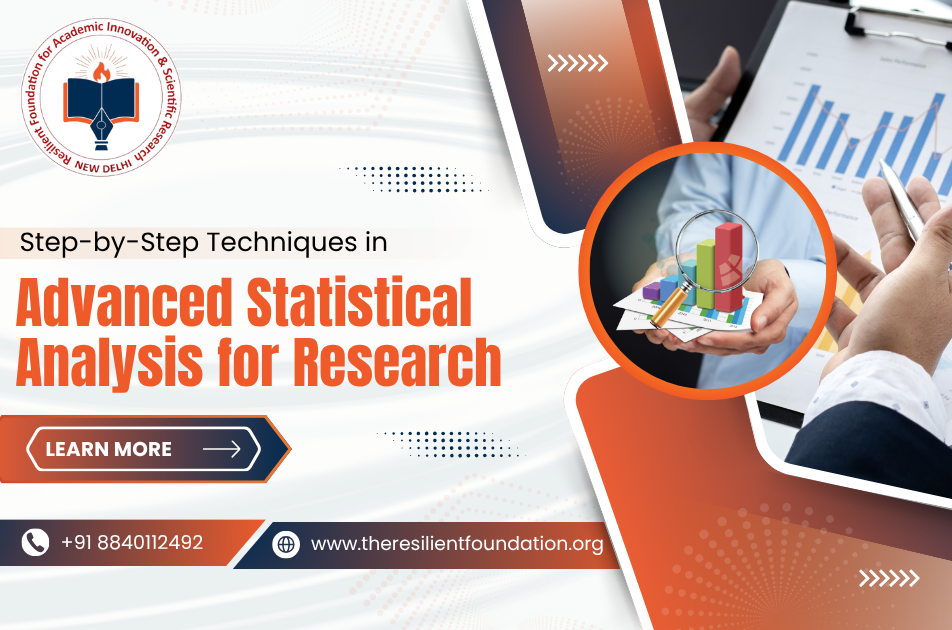When you look at modern studies, you will see that numbers are more than just figures. They are evidence, patterns, and stories waiting to be told. Using advanced statistical analysis for research helps scholars, professionals, and organisations make sense of large sets of numbers. But it is not just about calculation. It is also about drawing insights that guide decisions, improve quality, and build trust in findings. So, if you are starting a project or working on a paper, knowing how to use these methods can truly change the outcome.
Key Benefits of Using Advanced Statistical Techniques in Research

Researchers often ask why they should go deeper into statistical studies. The answer lies in the many advantages these methods bring. So, here are a few simple yet powerful benefits:
- Accuracy and Reliability: When you use proper statistical data analysis methods, your results are more precise. They reduce bias and highlight real patterns.
- Better Decision-Making: You can compare options, test ideas, and choose the right path. So, research becomes practical and useful.
- Clarity of Results: Complex numbers often confuse people, but with the right process, data becomes clear and easy to explain.
- Time and Cost Savings: If you plan smartly, analysis prevents waste. Because of that, research projects finish faster and use fewer resources.
- Confidence in Findings: Strong data builds trust. So, readers and decision-makers believe in your results.
Each of these points proves that the right techniques make studies stronger and more valuable.
Step-by-Step Techniques in Advanced Statistical Analysis for Research

To use these methods well, you need a clear process. Here are simple steps you can follow:
- Step 1: Define Your Goal: Start by stating what you want to prove. This makes the whole analytical research process smoother.
- Step 2: Collect Data Carefully: Data quality matters. If the collection is weak, the final results may be misleading.
- Step 3: Clean and Organise Data: Remove errors, missing values, and duplicates. So, you work only with reliable numbers.
- Step 4: Choose the Right Method: Depending on your goal, you can apply regression, hypothesis testing, correlation, or classification.
- Step 5: Run the Analysis: Use the correct tools and models to test your idea.
- Step 6: Check for Errors: Apply statistical quality control to avoid mistakes and ensure accuracy.
- Step 7: Interpret the Results: Numbers mean little without context. Explain what they show in plain language.
- Step 8: Present Clearly: Use charts, tables, and graphs to visualise data.
This step-by-step plan makes the analysis clear and less overwhelming for anyone new to research.
Tools and Software for Advanced Statistical Analysis
Technology makes research faster and easier. Today, three tools are most popular for professionals and students alike:
- R Programming: A powerful option when you want advanced models. It is flexible and has many libraries for research data analysis tools.
- SPSS: A user-friendly choice, often used in social sciences. It helps run tests without needing deep programming skills.
- Python: A modern favourite because it is open-source, simple to learn, and works well for big data projects.
If you pick the right tool, your work becomes more efficient. So, focus on what suits your research style and goals.
FAQs on Advanced Statistical Analysis
Q1. Why do researchers use advanced techniques instead of basic statistics?
Researchers prefer advanced methods because they bring more depth. With statistical data analysis methods, they test complex ideas, spot hidden links, and ensure stronger accuracy than simple averages or percentages can provide.
Q2. Which tool is best for students learning advanced analysis?
It depends on the project. Many choose SPSS for ease, but if you want flexibility, Python is great. R is best for in-depth analytical research. So, your choice should match your comfort and study needs.
Real-World Applications of Advanced Statistical Analysis
In daily life, this advanced statistical analysis for research is not just for classrooms or journals. They shape industries and policies everywhere. Here are some real uses:
- Healthcare: Hospitals use research data analysis tools to track patient outcomes, test new drugs, and improve treatments.
- Education: Schools analyse student data to design better programs and improve learning systems.
- Business: Companies apply statistical quality control to check products, reduce errors, and save costs.
- Social Research: Nonprofits like Resilient Foundation rely on data visualisation to explain project impacts, show donor outcomes, and plan future efforts.
- Government Policy: Leaders use large-scale studies to guide economic plans, environmental actions, and welfare programs.
At Resilient Foundation, we promote the value of statistics in creating fair opportunities and stronger communities. Because of that, we encourage students, researchers, and professionals to learn this advanced statistical analysis for research and apply it in their own fields.

